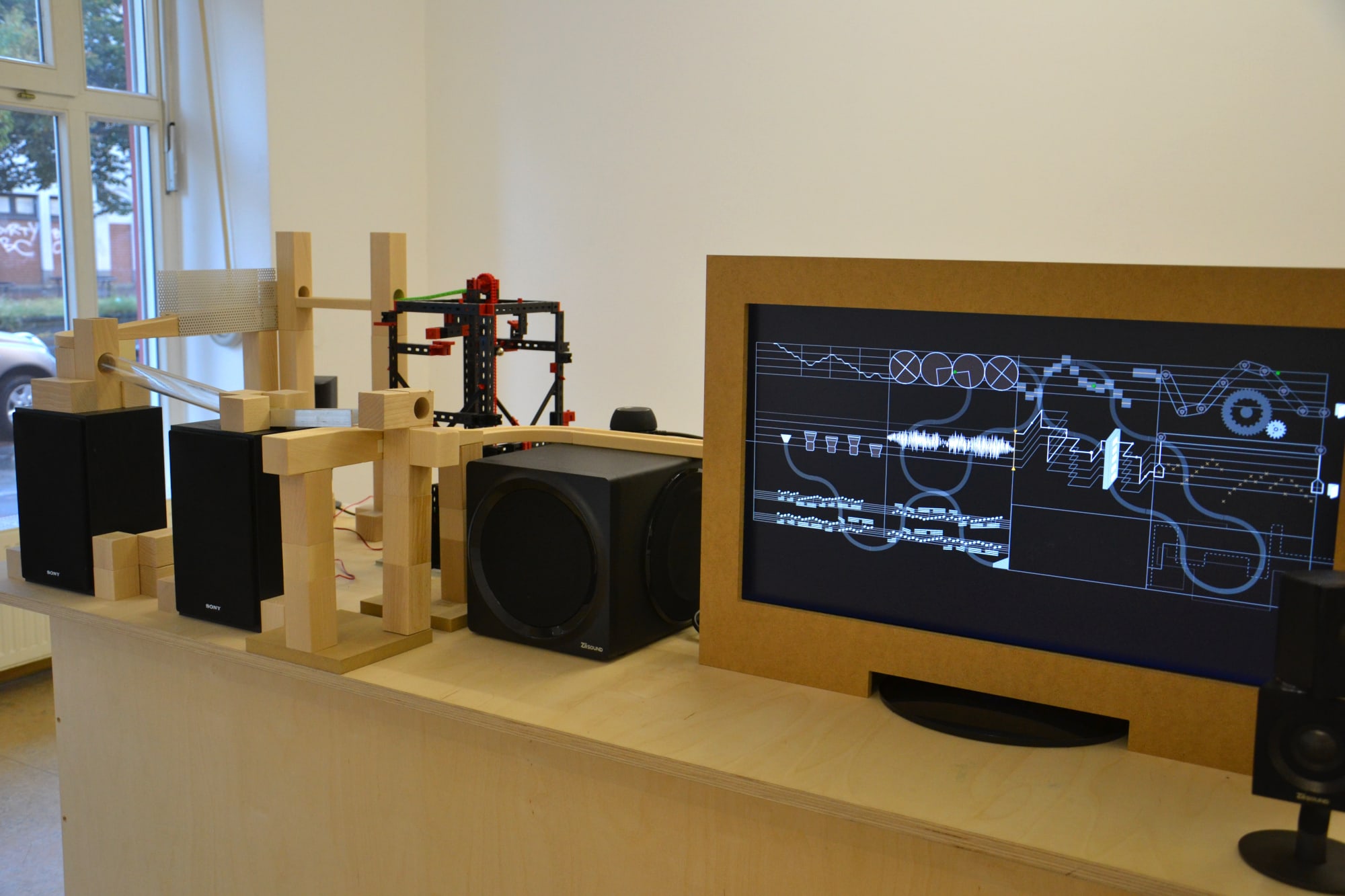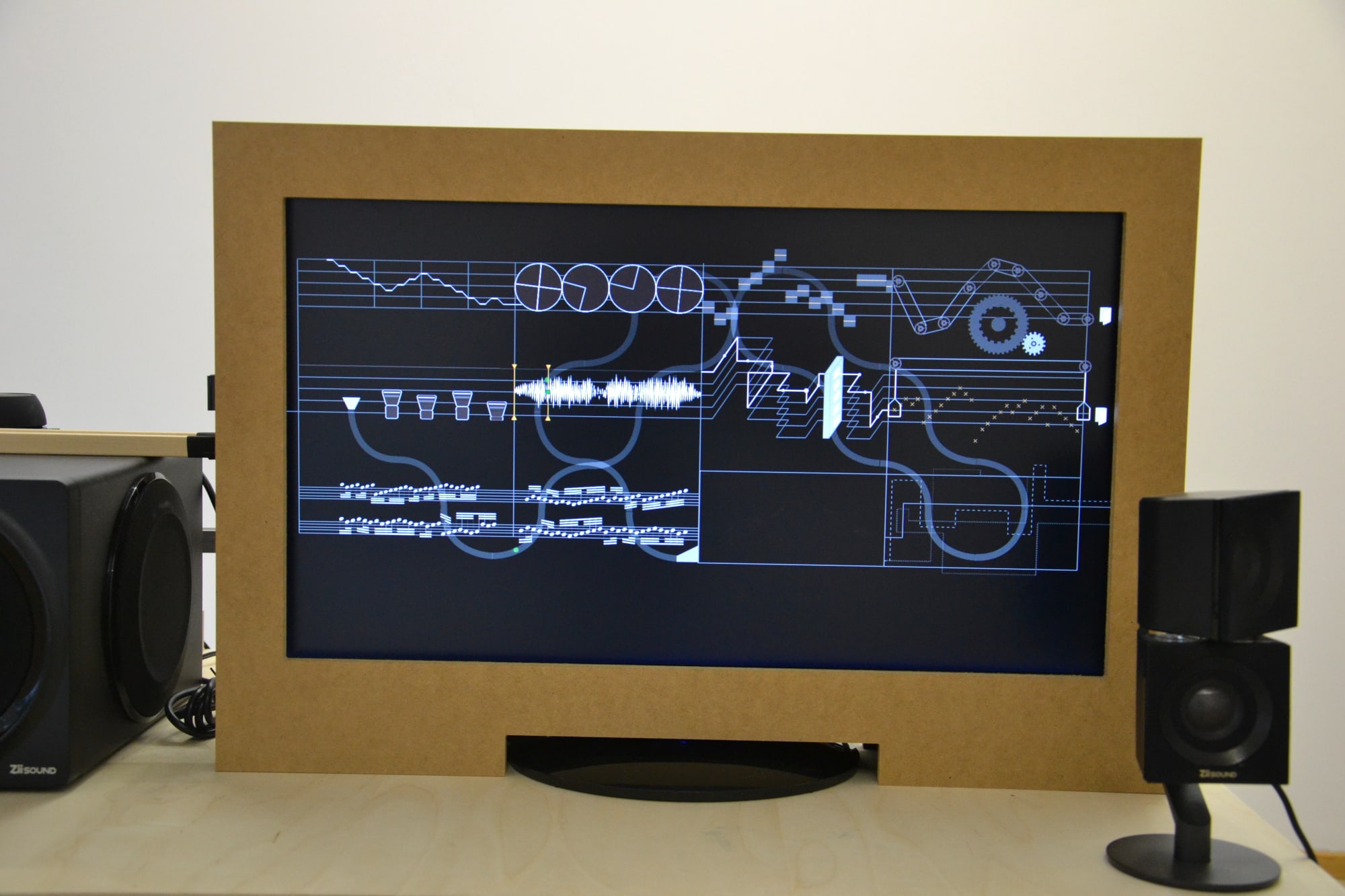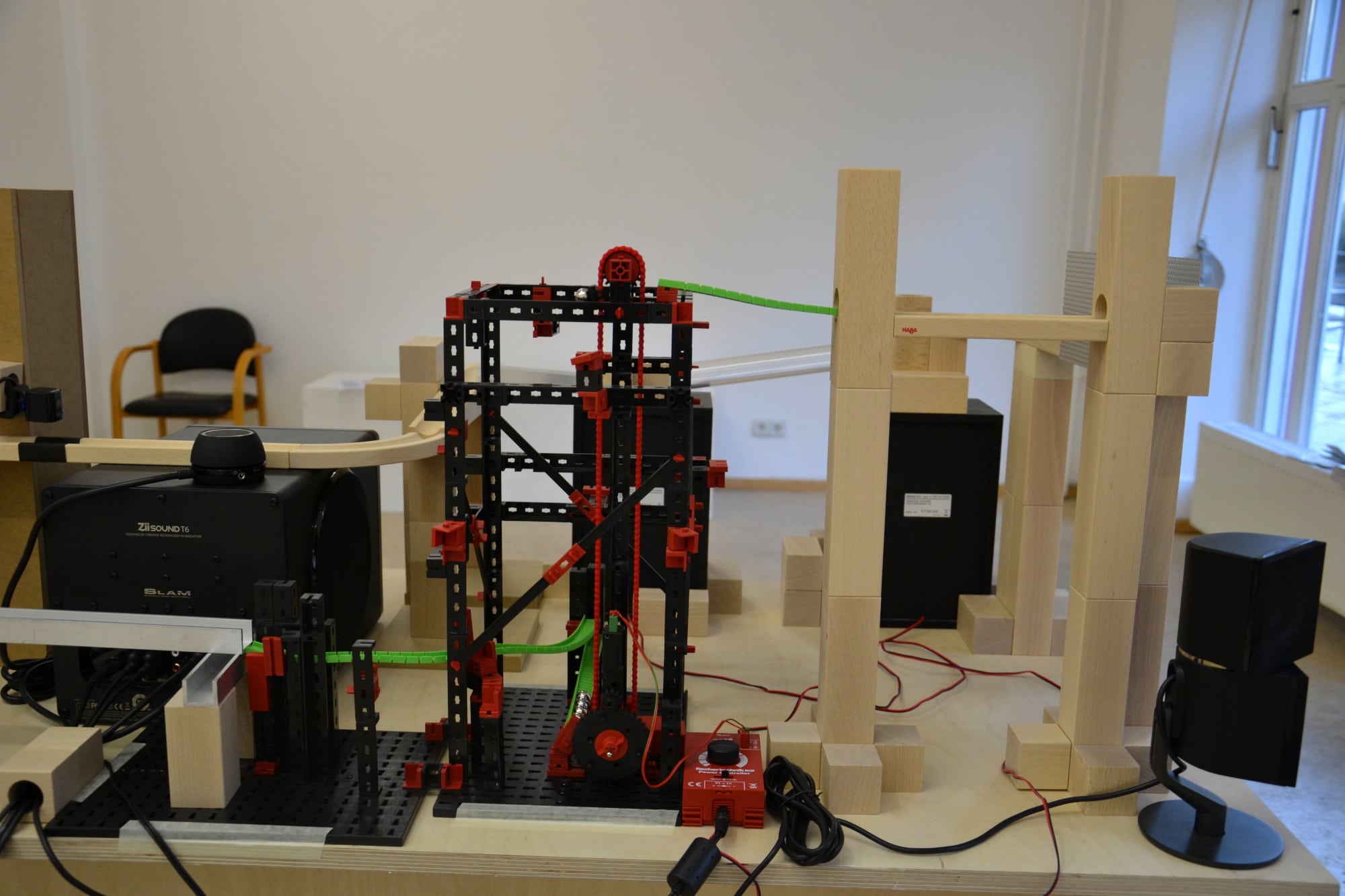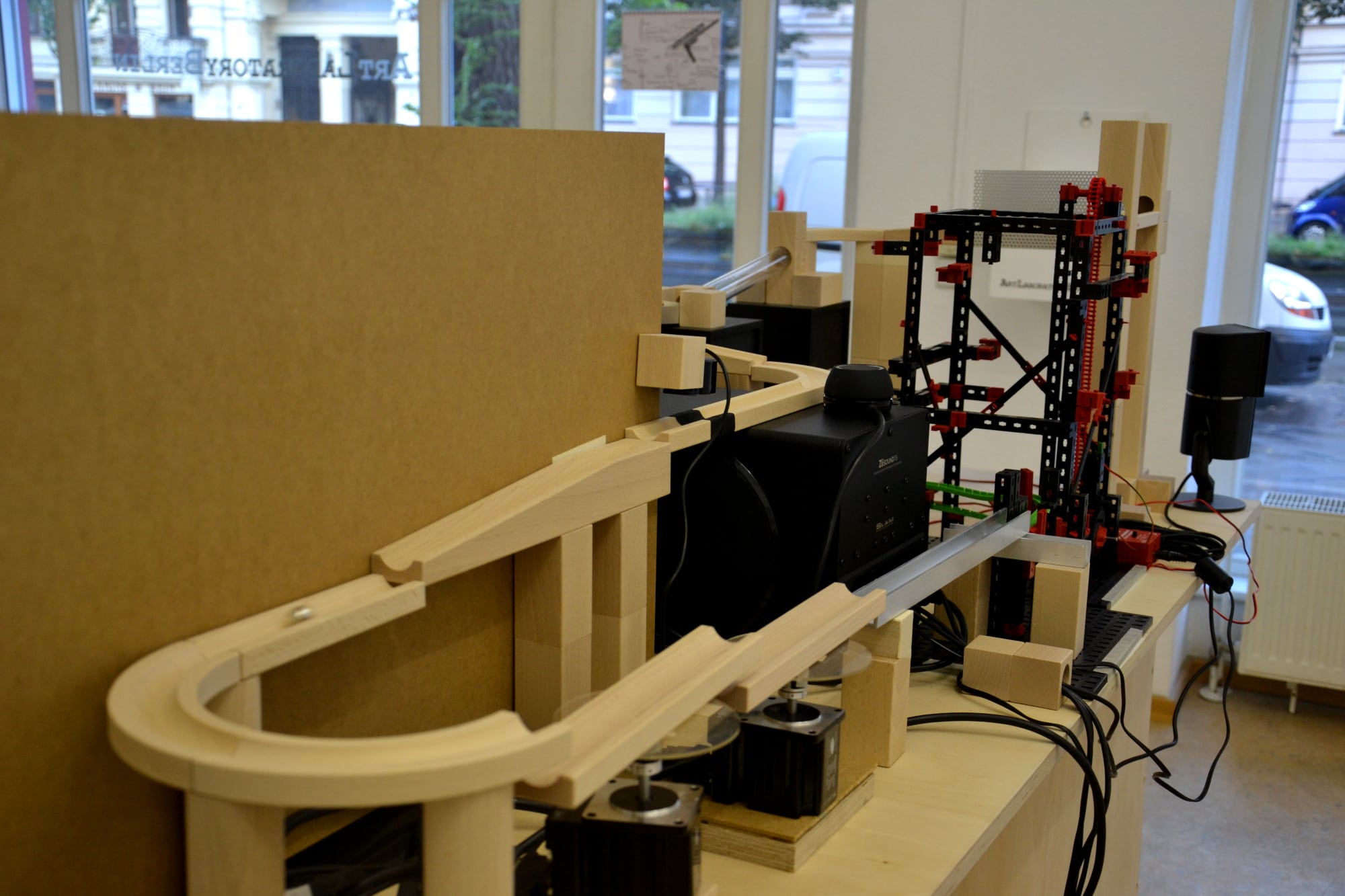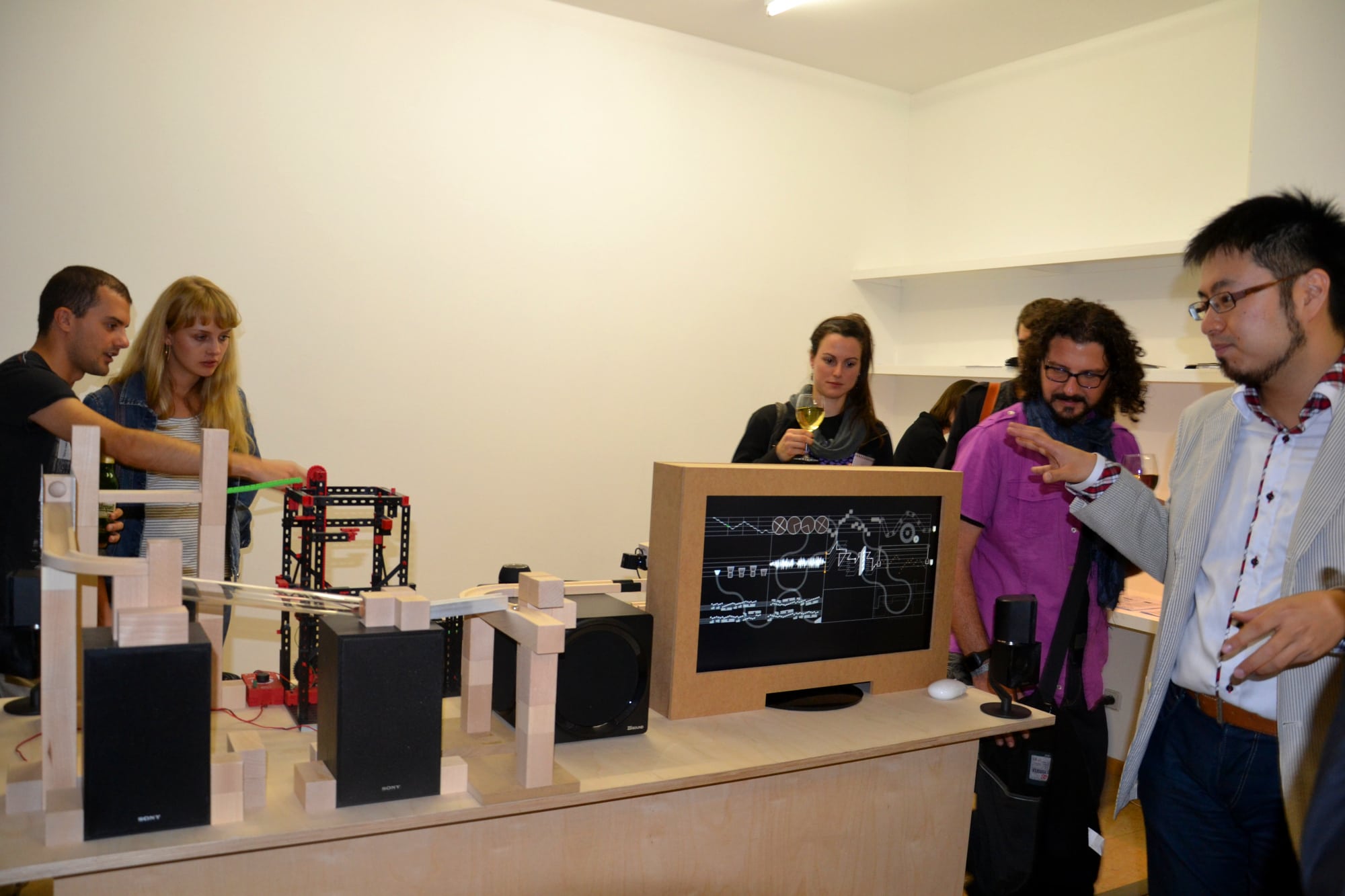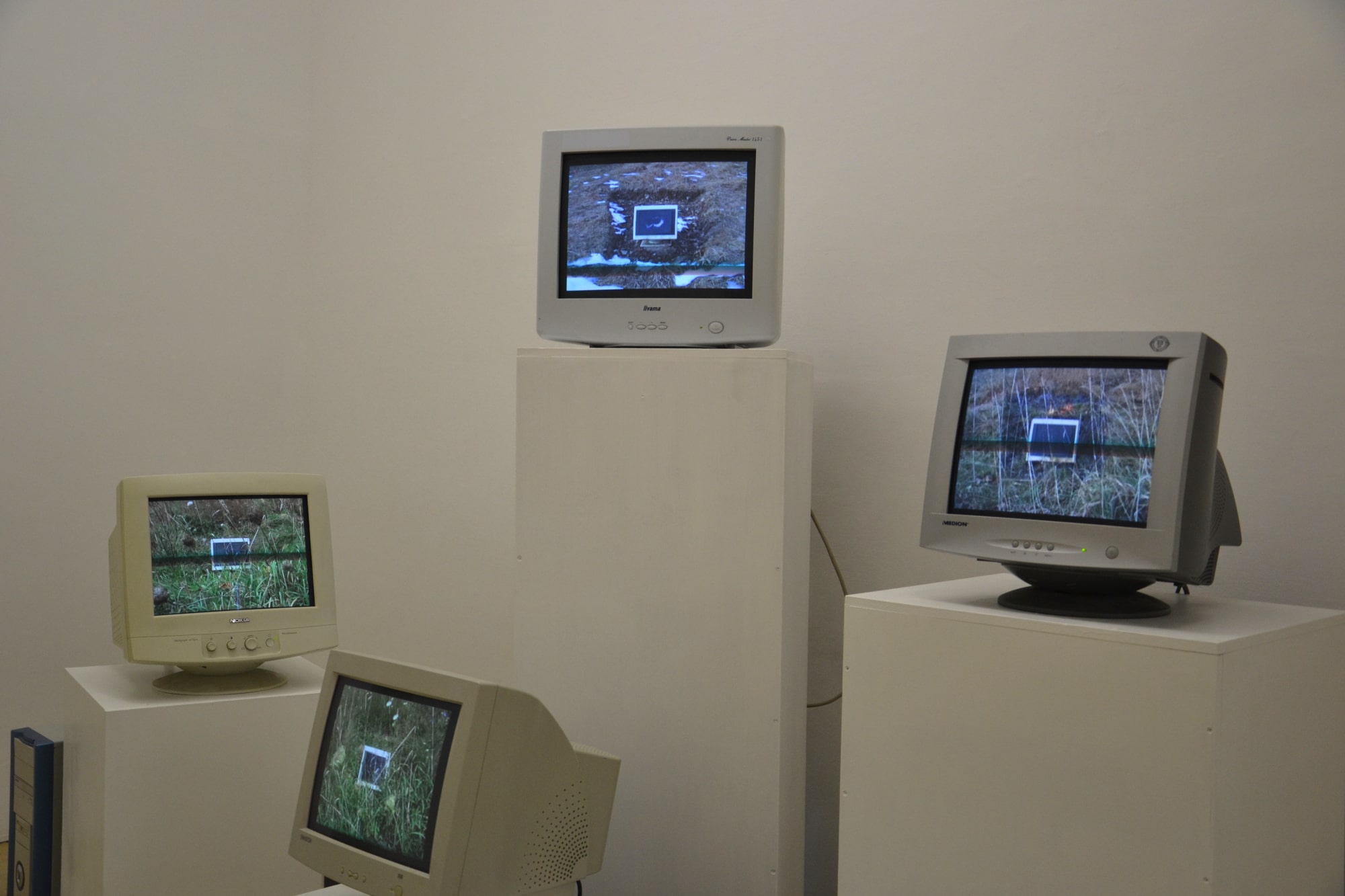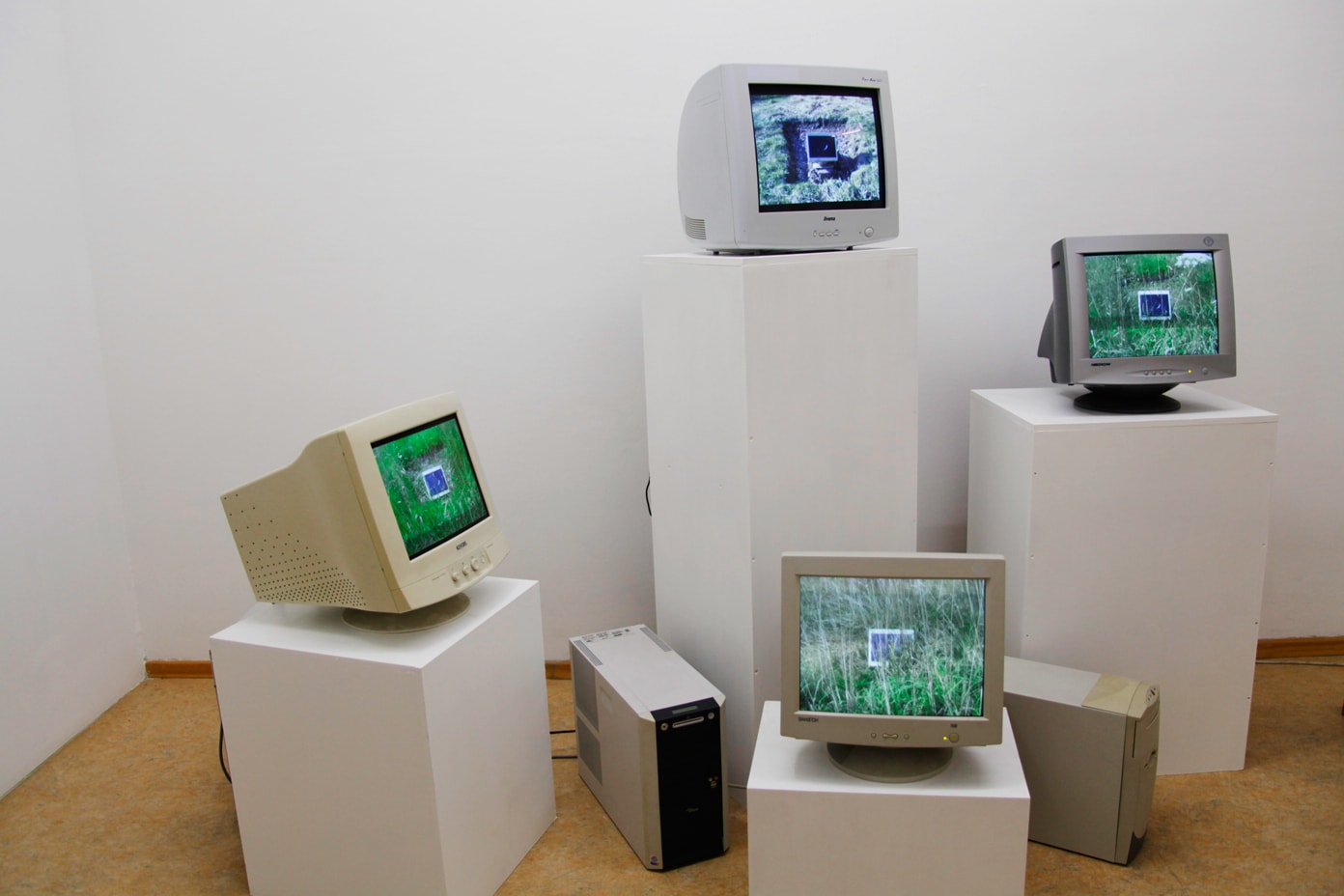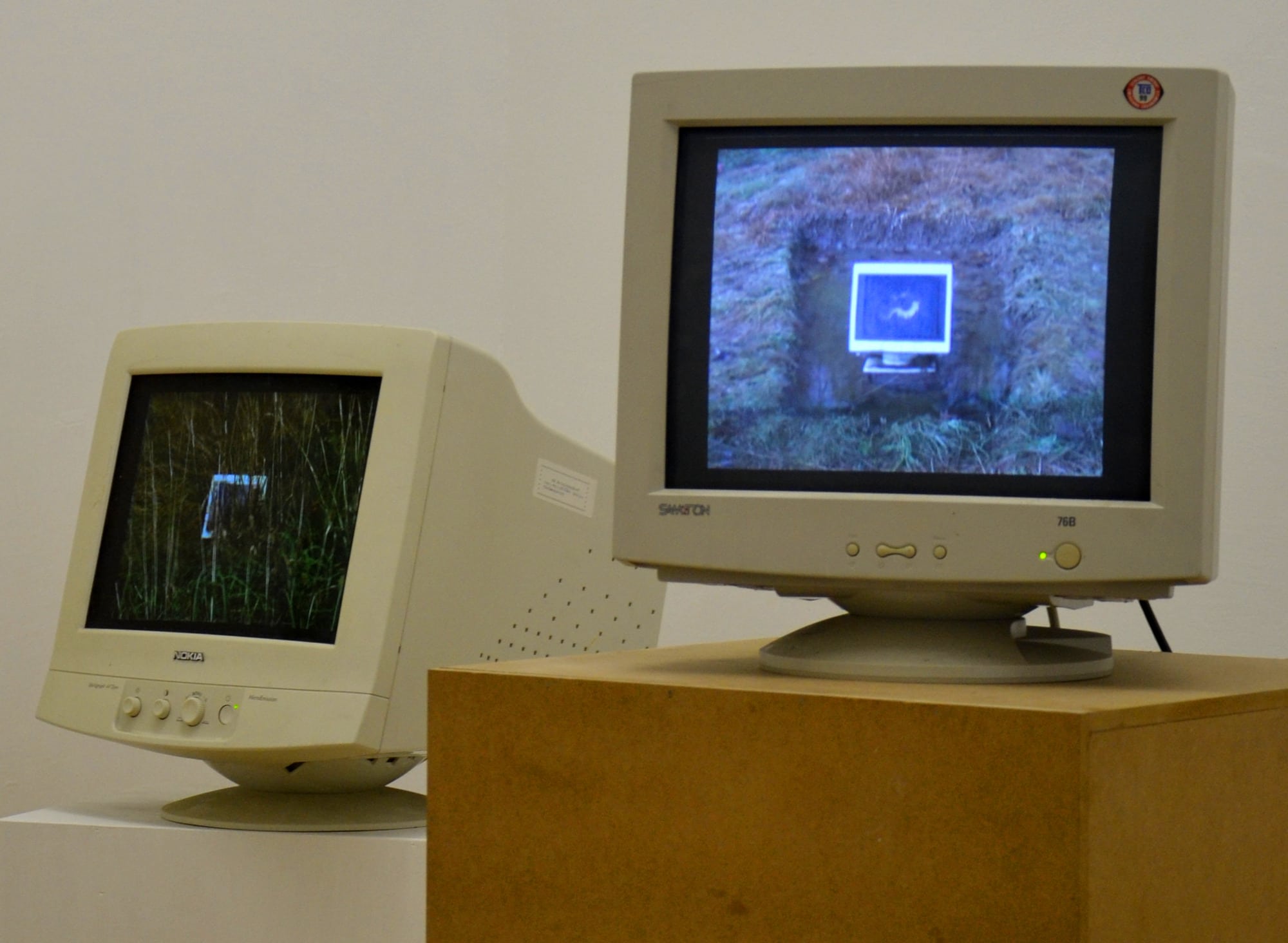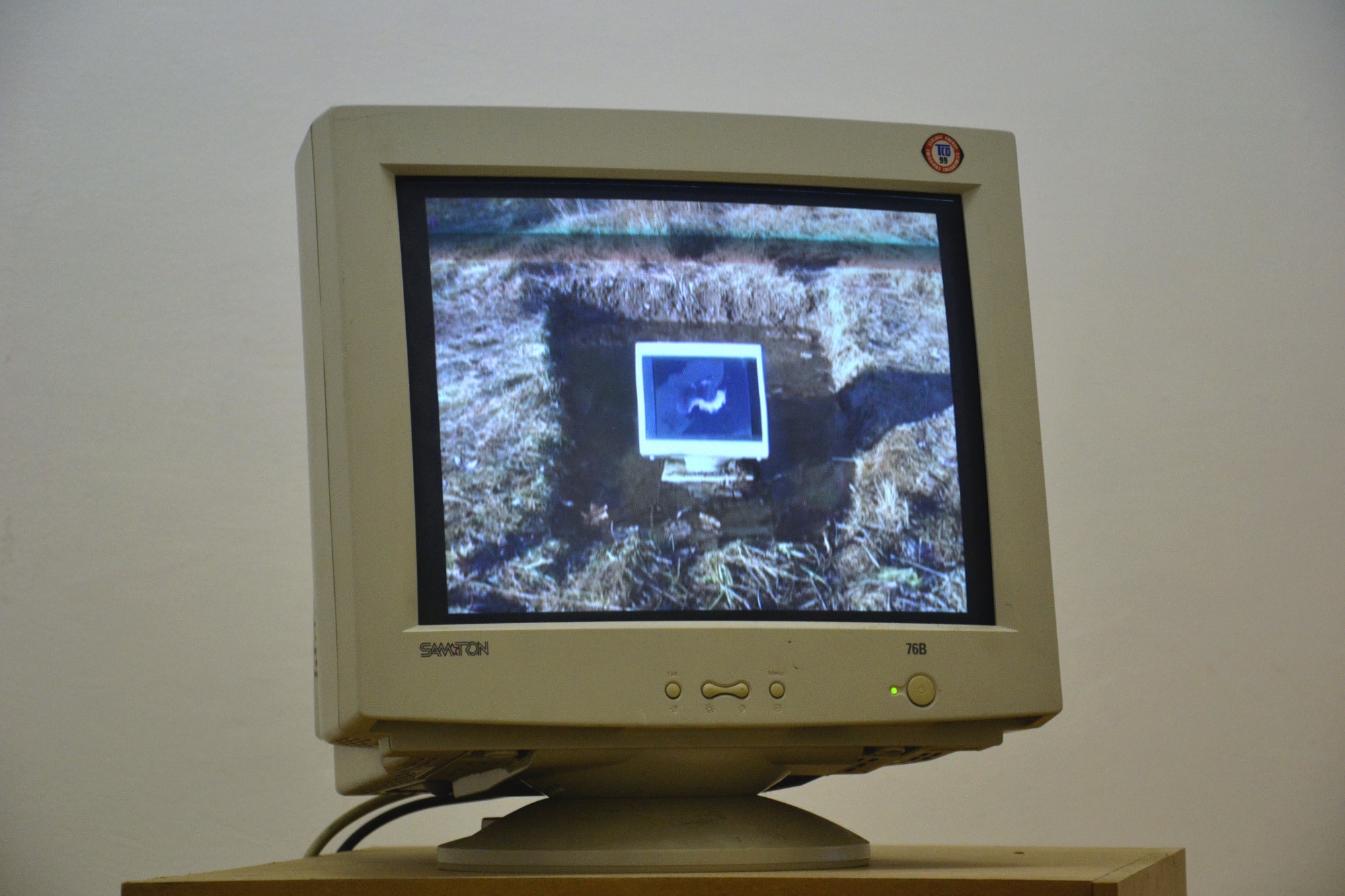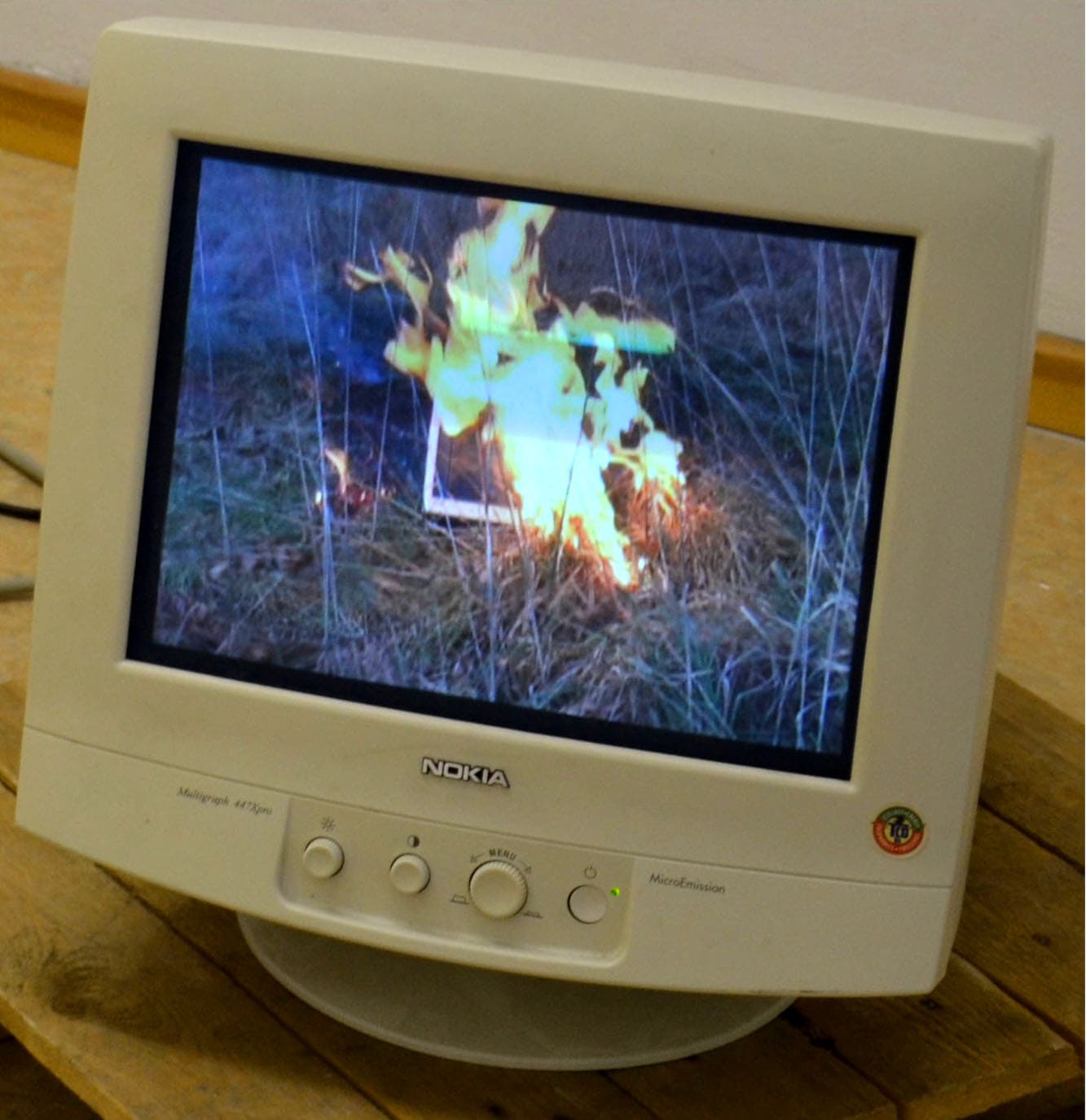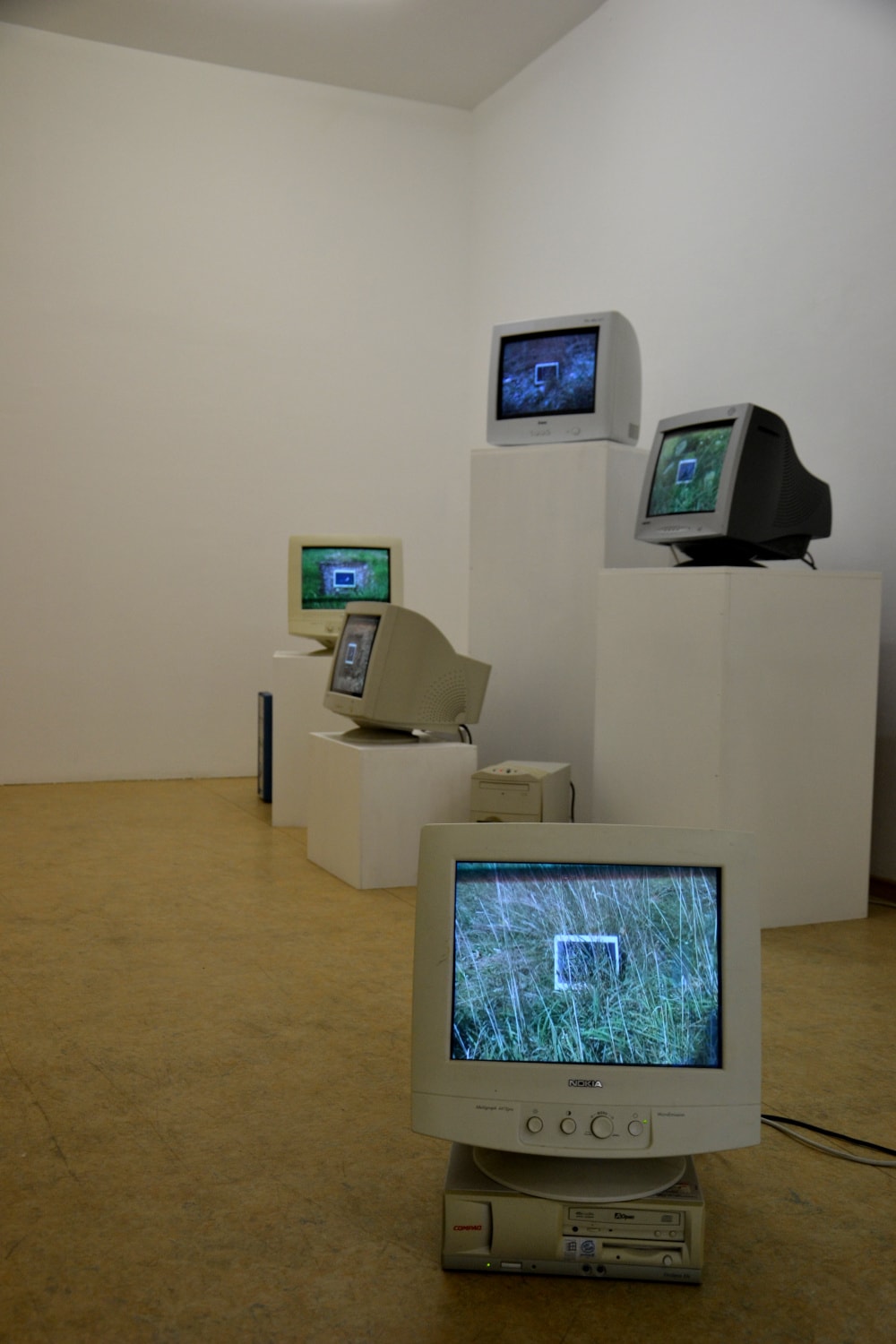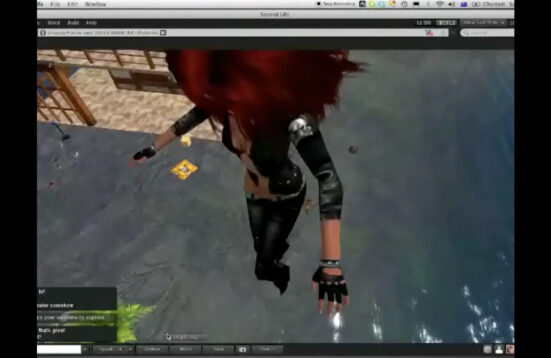Time & Technology/ 4
Embodiment of Time
Yasuhiro Sakamoto & Iñigo Giner Miranda | Dave Hebb
Art Laboratory Berlin is pleased to present the exhibition Embodiment of Time, the 4th and last part of the series Time &Technology.
The Japanese artist and scholar Yasuhiro Sakamoto and the Spanish composer Iñigo Giner Miranda have developed the installation Visible Canon. String Quartet without Strings for Four Loudspeakers and an Art Machine, shown in the front room, especially for this exhibition. The work transforms the complex time structures of contemporary and classical music into an acoustic-visual model. This sound sculpture interprets the term music in the broadest sense as an organization of time, which not only creates purely tonal material, but also patterns of movement (rolling marbles, turning wheels) and optical patterns (video), presenting a significant contribution to our understanding of the ever more complex relation we have to time in the 21st century.
Based on the Pythagoras Machine which was reali-zed by Sakamoto and colleagues in Japan from 2004-2006, this new sound sculpture has been developed on the basis of three pieces of classical and modern music. The first movement is a fragment from Johann Pachelbel’s Canon und Gigue in D-major from the 2nd half of the 17th century, played by the American violinist Matt Peebles. The second movement is a reversal of Pachelbel’s canon. The reversal remains surprisingly harmonic, but follows the opposite logic; its musical syntax has been altered. The third movement is a composition by Iñigo Giner Miranda, recording analogue sounds taken from the art machine itself. The piece is a sound canon with three parts that play the same voice at regular intervals.
The artwork also contains a computer program, developed by Sakamoto himself, that is designed specifically for this installation and directs a complex marble run. Thus, the artwork can be understood as a sculptural algorithm. “With our project we focus on the cutting point of audio-visual perception and try to embody a cross-modal Gesamtgestalt that links sound (=tone) and vision (=motion) in the perceptual process.” (Y. Sakamoto & I. Giner Miranda, July 2012).
The American artist Dave Hebb deals with artifacts of industrial civilization in the form of photography, video and installation. He observes and documents the contrast between the natural organic process of growth and decay and the clear geometric shapes of our technological infrastructure. His artistic projects often take place for long periods of time and over different seasons.
His video installation Monitor, shown in the back room, is a video and photographic documentation of an environmental intervention extending over a one-year period. Hebb placed a computer monitor outdoors and over the entire year documented changes to the environment several times a week. His piece is played on old computers and monitors and is inherently unstable, a common problem of technology as it becomes obsolete. This self-reference is also shown through the display of the video on the same type of monitor that is the subject of the piece itself, which is presented more as an archeological object than merely a means of presentation.
“Issues of permanence, entropy, obsolescence and the impulse to control and sanitize are contrasted with the regenerative power and cyclical structure of nature. The use of symmetrical and circular compositions and rhythmic patterns invoke symbolic sacred art from various cultures and time periods.” (Dave Hebb, July 2012). Viewers are challenged to reflect on their individual relationships with nature and technology as well as how technology is affecting our experience of time.
Time Technology – Some Theoretical Considerations (.pdf)

